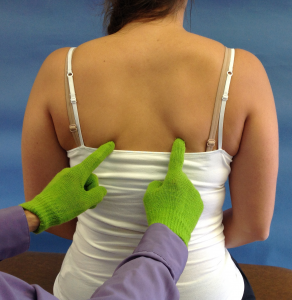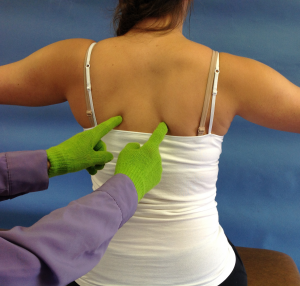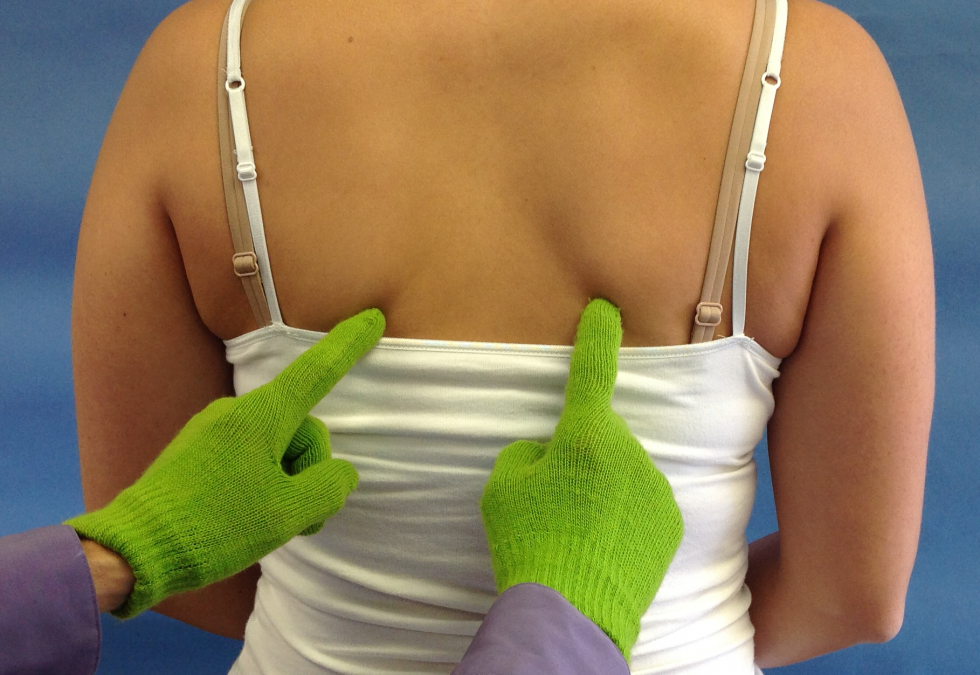 Do You Have a “SICK” Scapula?
Do You Have a “SICK” Scapula?
Normal movement of the shoulder requires coordination of the scapula and the glenohumeral joint. This is known as the scapulohumeral rhythm. It requires a balance between flexibility and stability, often referred to as the “throwers paradox.”
The acronym S-I-C-K Scapula refers to injury from overuse and/or fatigue of the muscles that stabilize and provide motion for the scapula. The SICK Scapula is a combination of:
- Scapular malposition
- Inferior medial border prominence
- Coracoid pain
- dysKinesis of scapular movement
 This dysfunction incorporates 2 sets of muscles. The muscles that stabilize the scapula are often weak. These include the serratus anterior, infraspinatus, deltoid, and trapezius muscles. Whereas, muscles that oppose the scapular stabilizers are often found to be tight. These muscles include levator scapula, upper trapezius, and pectoralis muscles.
This dysfunction incorporates 2 sets of muscles. The muscles that stabilize the scapula are often weak. These include the serratus anterior, infraspinatus, deltoid, and trapezius muscles. Whereas, muscles that oppose the scapular stabilizers are often found to be tight. These muscles include levator scapula, upper trapezius, and pectoralis muscles.
To assess scapular position and mechanics, one begins in a sitting or standing position. The osseous borders of the scapula are identified bilaterally. Following the vertebral borders of the scapula to the inferior medial border is the first landmark. A prominent inferior medial border on the involved side is an indication of scapular malposition.

 When actively elevating the upper extremities (bilaterally), the scapula will protract on the involved side. This will be obvious with medial border of the scapula “winging.”
When actively elevating the upper extremities (bilaterally), the scapula will protract on the involved side. This will be obvious with medial border of the scapula “winging.”
Due to the constant muscle tension via the muscular attachment to the coracoid, tenderness is also a common sign of a SICK scapula.
Finally, the concept of scapular dysKinesis can result from anything that upsets the balance of flexibility and stability. An array of altered kinematics of the scapulohumeral rhythm can lead to scapular dyskinesis.
While this is a very high level view of a complicated dysfunction, it serves as an overview for the clinical introduction to the SICK Scapula. An excellent resource for a deeper understanding can be found in a manuscript by Woods, Chimes, and Burnett (2012) https://www.rehabmedicine.pitt.edu/sites/default/files/rgr_fall_2012.pdf
For more cutting edge orthopedic information in iOrtho+ Premium Mobile App, please visit https://iortho.xyz/
- Burkhart SS, Morgan CD, Kibler WB: The disabled throwing shoulder: spectrum of pathology, part three: the SICK scapula, scapular dyskinesia, the kinetic chain, and rehabilitation, Arthroscopy. 2003;19:641-661.
- Gulick DT. iOrtho+ Mobile App. DTG Enterprises LLC. 2024
- Gulick, DT. OrthoNotes, 5th FA Davis Publishing, Philadelphia. 2023
- Magee D. Orthopedic Physical Assessment. 4th ed. Philadelphia, PA: WB Saunders Company; 2002.
- Woods S, Chimes GP, Burnett T. Comprehensive Approach to the Management of Scapular Dyskinesia in the Overhead Throwing Athlete. UPMC Rehab Grand Rounds, Fall 2012.
